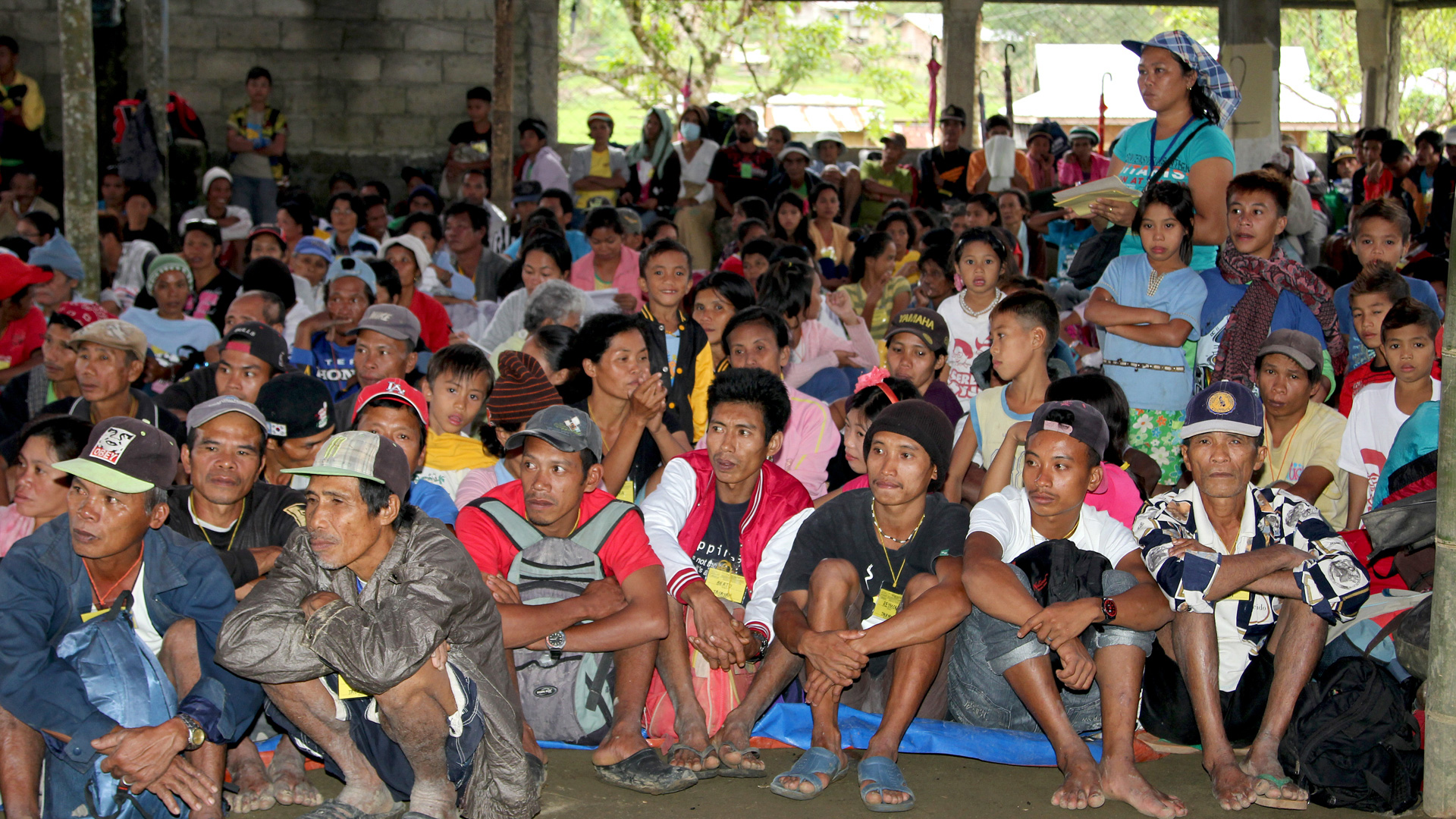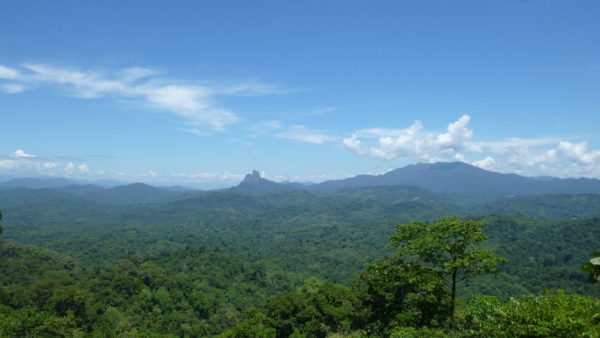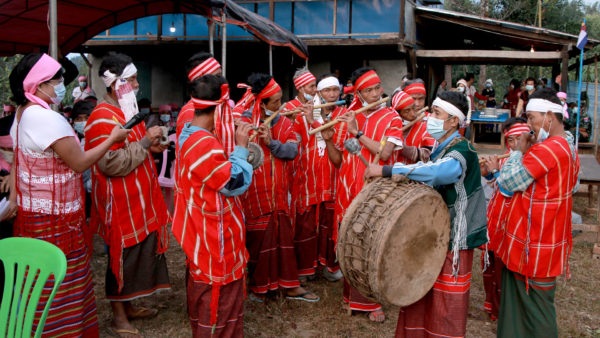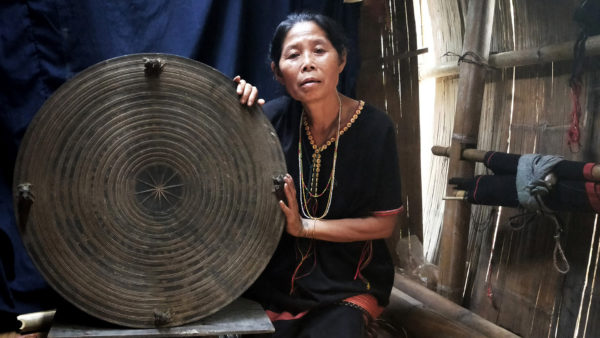First published on 08/15/2023, and last updated on 11/13/2023
By Giovanni B. Reyes, Bukluran
Note: This article is from the recently published report “Celebrating territories of life in Southeast Asia.” The text has been edited for the ICCA Consortium website.
On December 30, 2020, military and police operations in Tapaz, Capiz in the Philippines barged into houses while people were asleep and killed nine Tumandok Indigenous leaders including Jomar Vidal. According to a news article in The Inquirer, military officials insisted that those who died “fired first at police operatives serving 28 search warrants for firearms and explosives.” Sixteen other Tumandok were arrested on charges of illegal possession of firearms.
The official narrative was that the Tumandok men fought back, a claim belied by the head of the regional police crime laboratory Colonel Enrique Ancheta, who reported that “seven of the nine Indigenous leaders who were killed tested negative for gunpowder residue.” The colonel was later relieved of his post. Defend Panay Network (DPN), an alliance of rights advocates, the church, the academe and environmental organizations, reported that the testimonies of the wives, children and family members revealed that the leaders were targeted for their decades-old struggle against the militarization of their communities and destructive projects such as the Jalaur River megadam. Even their legal counsel, Angelo Karlo Guillen who was defending Tumandok community members accused of resisting police arrest, was brutally attacked and killed.
A report by the Panaghiusa Philippine Network to Uphold Indigenous Peoples Rights said that the military and police were forcing them to sign documents supposedly to “surrender” and “clear their names.” They refused to sign the documents since they are not members or supporters of the Communist Party of the Philippines-New People’s Army (CPP-NPA), a local communist insurgency tagged as a terrorist organization by the Philippine government. In recent years, Indigenous Peoples have been tagged as communists simply because most guerilla bases are in their ancestral domains. Naturally, as these are the last remaining forests in the country.
One such community who are protecting a forested mountain range are the Tumandok, who are rooted in a traditional territory at the foot of the highest mountains of Panay Island – Madja-as and Baloy, the headwaters of the rivers Jalaur, Pan-ay and Aklan, which borders all four provinces of the island. They comprise 6% of the 12-15 million of the Philippine’s Indigenous population. The term tumandok means “one who belongs to a place,” or simply, a native.
Land dispossession of the Tumandok began in June 1960 when the government signed the construction of the Jalaur Multi-purpose Project (JRMP) into law. Phase one was World Bank-funded rehabilitation of four existing national irrigation systems in Iloilo province covering 22,000 hectares of rice farms. Two years later, another presidential proclamation was signed declaring 33,310 hectares of Tumandok ancestral lands in Jaena Norte, Jamindan in Capiz province reserved for the Armed Forces of the Philippines.
In the ‘70s, the Tumandok people’s vehemence to stay put resulted in peace making and inter-tribal unity. These efforts strengthened community positions against large-scale destructive projects, and ended the long-standing tribal disputes between the Pan-ayanon and Akeanon tribes, recovered pasturelands, and improved traditional cooperation while supplementing livelihood with new ways of raising farm products. The Tumandok also stopped paying tumado or land rent given to the Philippine army. Besides, many Tumandok families, following their land dispossession, became indebted to moneylenders who ask 50-100% interest payment per year through the sagahay system.
By the ‘80s, Tumandok communities organized themselves to improve agricultural production including campaigns on literacy and health, given that schools are located too far away, resulting in only 15–25% of the population’s literacy rate. Malnutrition is widespread among children, while tuberculosis is widespread among the elderly. In 1996, they organized Tumandok nga Mangunguma nga Nagapangapin sa Duta kag Kabuhi (Indigenous Farmers in Defense of Land and Life) to mobilize the community to protect ancestral domains against mining and dams.
In 2009, concerns about loss of tradition became real when the JRMP Phase two was introduced. This phase includes the construction of three large dams: a 109-meter high dam, 10-meter catch dam, and a 38-meter after bay dam that is estimated to contain 197 million cubic meters of water. An 81-kilometer high line canal will connect the dams to five existing river irrigation systems. With an Official Development Assistance (ODA) fund by the South Korean Government of PhP8.96 billion ($207.88M) through its Export-Import Bank, and Philippine government counterpart of PhP2.26 billion, the JRMP Phase two aims to “sustain the region’s self-sufficiency and contribute to the annual increase in the country’s rice production target of 7.6%.”
What does this “self-sufficiency” mean for the Tumandok? It is interpreted everywhere to mean threat to the environment and people. Four Tumandok communities with a total population of 17,000 will be submerged and will inundate about 800 hectares of farmlands including forests without security of relocation. This also results to the loss of longstanding cultural traditions that are essential to their Indigenous identity and existence such as the epic Suguidanon of Panay, binanog dancing, and panubok (Indigenous embroidery), all of which are rooted in the land as a sacred celebration of life. These are considered heirlooms more prized than earthly goods. They face the loss of the irreplaceable maaram (learned culture-bearer) and the respected magurang (elders who are keepers of Indigenous tradition), who make Panay a rich repository of traditional culture that is entirely unique to this part of the world. Moreover, five Tumandok burial grounds and one sacred site would be destroyed. It took decades to revive Panay Bukidnon culture after the atrocities that dominated the area in the 1980s and 1990s. It is these very cultures and practices, the sacredness and spiritual values that the Tumandok attach on their lands, that have enabled forests, watersheds, and rivers to thrive and flow freely.
In 2011, the Tumandok people declared opposition to the mega dam project. This collective community resolution was followed by the formation of the Jalaur River for the People Movement (JRPM), to coordinate public education against the project. Successive assemblies in 2014, 2016 and 2019 asserted the same position. A civil action was filed by the Tumandok in 2015 to secure protection order, which the court dismissed. On top of loss of biodiversity, livelihood and homes, severe flooding during typhoons is expected to affect around one million people living in downstream areas along eight towns and one city traversed by the Jalaur River. This is not to be dismissed as the country experiences an average of 20 storms annually. The JRPM sought negotiations and lobbied with government agencies and local governments to no avail. A team was sent to South Korea twice to bring to the Korean Export-Import Bank, the South Korean Government and the South Korean people the impact of the project.
Global voices have poured in to support the plight of the Tumandok, calling on the Korea Export-Import Bank to stop funding the dam. These include the ICCA Consortium and the Global Forest Coalition. All these efforts, however, have not succeeded and Tumandok leaders live in constant threat.
Government response to Indigenous Peoples’ rights to their territories and conserved areas is too difficult to hide. The Tumandok case cannot be dismissed as “casualties of legitimate armed encounter.” Here, legitimate dissent is equal to terrorist labeling and the killing that follows. This has to stop. The Tumandok’s struggle for their Territory of Life reflects national-global Indigenous Peoples’ struggles against projects destructive to land and life. For as long as Indigenous Peoples breathe life to nurture and nourish land, the vehemence to stay put against dispossession becomes all the more a sacred duty – to pass on to the next, mountains with trees and rivers with clear water, just as the Jalaur river will.



